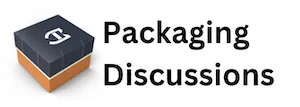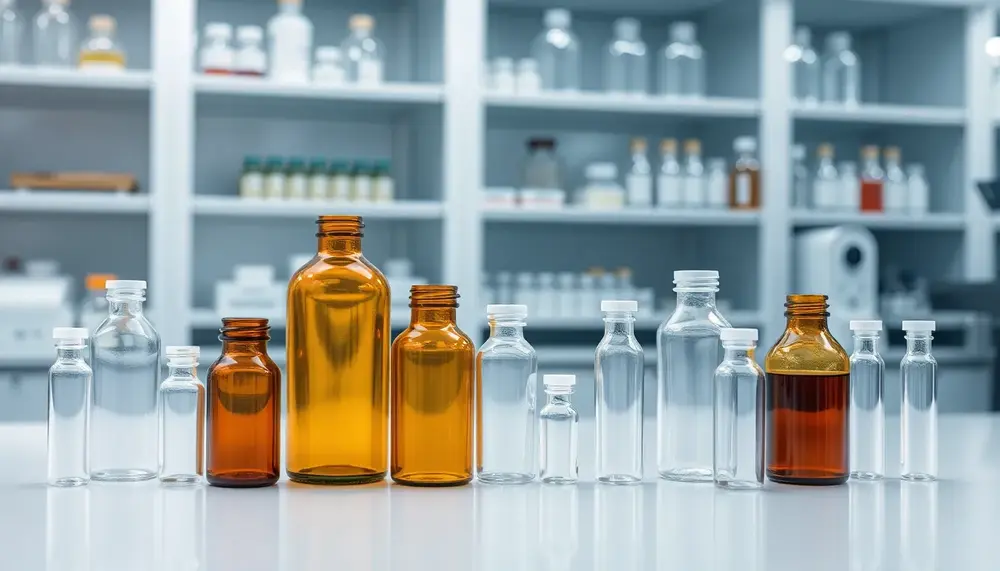Table of Contents:
Market Dynamics and Growth Potential in Pharmaceutical Glass Packaging
The pharmaceutical glass packaging market is not just ticking upwards—it’s practically surging. With a projected CAGR of 8.8% through 2030, this sector is outpacing many others in healthcare packaging. What’s really driving this? Well, it’s a potent mix of shifting consumer expectations, regulatory scrutiny, and the unrelenting demand for both sterility and traceability in drug delivery. Pharmaceutical companies are under pressure to innovate, but also to comply with ever-tightening standards. That’s not just talk; it’s visible in the volume of patent filings and the spike in R&D investments from both established players and nimble newcomers.
Now, the growth potential here isn’t just about volume. It’s about value—think higher margins on specialized glass types, such as borosilicate, and the premium placed on packaging that can handle complex biologics or next-gen injectables. Companies are racing to differentiate with tamper-evident features, improved chemical resistance, and smart packaging that integrates tracking or authentication tech. These are not nice-to-haves anymore; they’re rapidly becoming must-haves as the market matures.
Interestingly, the pace of consolidation is picking up. Larger firms are snapping up niche innovators to broaden their portfolios and accelerate go-to-market timelines. Meanwhile, regulatory harmonization across regions is smoothing the path for cross-border expansion, making it easier for companies to scale up quickly. All in all, the market dynamics here are anything but static—if anything, they’re a bit of a rollercoaster, and those who can adapt fast will ride the next big wave of growth.
Key Drivers Shaping the Pharmaceutical Glass Packaging Market
Key drivers behind the evolution of the pharmaceutical glass packaging market are both nuanced and multifaceted. For starters, the surge in biologics and personalized medicine is creating a demand for packaging solutions that offer superior chemical stability and compatibility. Glass, with its inert nature, is uniquely positioned to meet these requirements, especially as more temperature-sensitive and high-value therapies enter the market.
- Stringent regulatory frameworks are pushing manufacturers to adopt higher quality standards, not just in the product itself but throughout the entire supply chain. Compliance with guidelines from agencies like the FDA and EMA is now a baseline expectation, driving continuous improvements in glass composition and manufacturing processes.
- Rising concerns over extractables and leachables are prompting a shift toward advanced glass formulations. Pharmaceutical companies are prioritizing packaging that minimizes interaction with sensitive drug products, especially for injectable and ophthalmic applications.
- Globalization of pharmaceutical supply chains is amplifying the need for robust, breakage-resistant packaging. As drugs travel greater distances and pass through more hands, the demand for glass containers that can withstand mechanical stress without compromising product integrity is at an all-time high.
- Heightened focus on sustainability is nudging the industry toward eco-friendly glass production methods and increased recyclability. This isn’t just a marketing trend—regulatory incentives and consumer expectations are making it a strategic imperative.
- Digital transformation is also playing a role, with smart packaging solutions integrating serialization, anti-counterfeiting features, and real-time tracking. These technologies are being woven into glass packaging to enhance patient safety and streamline supply chain management.
Altogether, these drivers are reshaping the competitive landscape, making adaptability and innovation more critical than ever for stakeholders in the pharmaceutical glass packaging market.
Advantages and Challenges of Emerging Trends in Pharmaceutical Glass Packaging
| Emerging Trend | Advantages | Challenges |
|---|---|---|
| Lightweight Glass Containers |
|
|
| Hybrid Glass-Polymer Solutions |
|
|
| Closed-loop Recycling Systems |
|
|
| Digital Printing and Smart Labeling |
|
|
| Green Manufacturing Processes |
|
|
Regional Spotlight: North America’s Role in Market Expansion
North America stands out as a powerhouse in the global pharmaceutical glass packaging market, thanks to its robust pharmaceutical manufacturing base and a relentless pace of drug innovation. The region’s advanced healthcare infrastructure and high adoption rate of specialty medicines fuel a steady appetite for premium packaging solutions. In particular, the United States is home to several leading glass packaging producers and pharmaceutical giants, creating a vibrant ecosystem that encourages rapid technology transfer and product launches.
- Regulatory agility: North American regulatory bodies, especially the FDA, are quick to adapt guidelines in response to emerging therapies, which accelerates the approval and adoption of novel glass packaging formats.
- Investment in automation: Facilities across the U.S. and Canada are investing heavily in automated inspection and quality control systems, reducing defects and ensuring consistently high standards in glass packaging production.
- Supply chain resilience: The region’s focus on supply chain localization and risk mitigation has led to strategic partnerships between pharmaceutical companies and packaging suppliers, strengthening the reliability of drug delivery systems.
- Market segmentation: Demand is particularly strong for vials and prefilled syringes, reflecting the region’s leadership in vaccine production and injectable therapies.
In summary, North America’s proactive approach to innovation, regulation, and supply chain management is not just supporting market growth—it’s setting the pace for global expansion in pharmaceutical glass packaging.
Segmentation by Product Type: Bottles, Vials, Ampoules, and More
Segmentation by product type is shaping the competitive edge in the pharmaceutical glass packaging market. Each category—bottles, vials, ampoules, cartridges, and syringes—caters to specific drug delivery requirements and regulatory nuances. The diversity in product types isn’t just a technicality; it’s a strategic lever for both manufacturers and end-users.
- Bottles: Often chosen for liquid oral medications and bulk solutions, bottles are evolving with tamper-evident closures and ergonomic designs. The demand for child-resistant features is also gaining momentum, especially in pediatric and homecare segments.
- Vials: These are the backbone for vaccines, biologics, and lyophilized drugs. Multi-dose and single-dose formats are being tailored to minimize waste and support cold chain logistics, a trend accelerated by the global vaccine rollout.
- Ampoules: Preferred for single-use injectable drugs, ampoules offer high chemical resistance and a contamination-free seal. Innovations include laser scoring for safer opening and reduced risk of glass particle contamination.
- Cartridges & Syringes: The rise of self-administration and point-of-care treatments is boosting demand for prefilled cartridges and syringes. Enhanced barrier coatings and siliconization techniques are now standard to ensure dose accuracy and ease of use.
- Other formats: Specialty containers, such as dropper bottles and customized diagnostic vials, are emerging to meet the needs of niche therapies and advanced diagnostics. Their growth reflects the market’s shift toward patient-centric solutions and personalized medicine.
This nuanced segmentation allows pharmaceutical companies to align packaging choices with drug stability, patient safety, and market-specific requirements—making it a key driver of innovation and differentiation in the industry.
Emerging Trends: Innovation and Sustainability in Glass Packaging
Innovation and sustainability are rapidly becoming the north stars for pharmaceutical glass packaging, with a wave of fresh approaches shaking up the status quo. Companies are exploring ultra-lightweight glass containers, which not only reduce shipping costs but also cut down on raw material usage—a win-win for both economics and the environment.
- Hybrid glass-polymer solutions are making headlines, blending the best of both worlds: the chemical stability of glass and the flexibility or impact resistance of polymers. These hybrid containers are gaining traction for complex biologics and next-generation therapies.
- Closed-loop recycling systems are moving from pilot projects to mainstream adoption. Manufacturers are partnering with healthcare providers to reclaim used glass packaging, process it, and reincorporate it into new containers, significantly reducing landfill waste.
- Green manufacturing processes are now front and center. From using renewable energy in glass furnaces to implementing water-saving technologies, producers are under pressure to demonstrate measurable reductions in their carbon footprint.
- Digital printing and smart labeling are emerging as game-changers, enabling real-time tracking, anti-tampering features, and even interactive patient engagement via QR codes or NFC chips.
In short, the industry is moving beyond incremental tweaks. Bold, systemic changes are shaping a future where glass packaging is not just a passive container, but an active contributor to sustainability and innovation goals.
Strategic Insights for Stakeholders: Investment and Expansion Opportunities
Stakeholders in the pharmaceutical glass packaging market are facing a landscape ripe with untapped potential, but also nuanced challenges that demand a strategic approach. For investors, the sweet spot lies in targeting companies with robust intellectual property portfolios and proven agility in scaling production for specialty drug formats. Strategic alliances—especially with biotech firms and digital health startups—are emerging as a shortcut to market share, allowing traditional glass manufacturers to leapfrog into high-growth therapeutic areas.
- Vertical integration is gaining traction as a hedge against supply chain volatility. Stakeholders who control both raw material sourcing and downstream packaging operations are better positioned to weather disruptions and capture more value per unit sold.
- Geographic diversification offers a buffer against regional regulatory shifts and market saturation. Expanding into emerging markets, where local pharmaceutical production is ramping up, can unlock new revenue streams and spread risk.
- Investment in digital infrastructure is no longer optional. Platforms that enable real-time inventory tracking, predictive maintenance, and end-to-end traceability are becoming decisive factors in winning large-scale contracts with pharma clients.
- Customization capabilities—from rapid prototyping to small-batch production—are now a differentiator. Stakeholders able to deliver bespoke solutions for niche therapies or clinical trials are attracting premium partnerships and long-term commitments.
In essence, those who blend operational resilience with innovation and a willingness to forge unconventional partnerships are poised to capture the next wave of growth in this dynamic market.
Case Example: Market Development in the United States
The United States has emerged as a bellwether for market development in pharmaceutical glass packaging, driven by its unique blend of regulatory, technological, and economic factors. One standout trend is the rapid adoption of advanced modular manufacturing lines, which enable quick retooling for new drug formulations and short-run specialty packaging. This flexibility is especially critical as the U.S. market continues to see a surge in orphan drugs and breakthrough therapies requiring custom glass formats.
- Public-private partnerships have accelerated investment in domestic glass production capacity, reducing reliance on overseas suppliers and ensuring a more resilient supply chain for critical medicines.
- Regional clusters—notably in the Northeast and Midwest—are fostering collaboration between glass manufacturers, pharmaceutical companies, and research institutions, resulting in faster commercialization of innovative packaging solutions.
- Tax incentives and federal grants are being leveraged to modernize aging production facilities, with a strong emphasis on energy efficiency and digitalization.
- Specialized workforce training programs are being rolled out in partnership with technical colleges, ensuring a pipeline of skilled labor to support high-precision glass manufacturing and quality assurance.
These targeted initiatives have positioned the U.S. as a global leader in both the scale and sophistication of pharmaceutical glass packaging, setting benchmarks that other regions are now racing to match.
Future Outlook and Recommendations for Market Participants
Looking ahead, the pharmaceutical glass packaging market is poised for transformative change as digitalization, regulatory harmonization, and patient-centric design become industry standards. Market participants should anticipate a shift toward predictive analytics in production planning, enabling faster response to demand fluctuations and reducing inventory waste. Companies that invest in machine learning for quality control and process optimization will likely see measurable gains in yield and product consistency.
- Proactive regulatory engagement: Early collaboration with regulatory agencies on new packaging technologies can streamline approvals and set industry benchmarks, providing a competitive edge.
- Agile product development: Establishing cross-functional teams to rapidly prototype and test new glass formats will help capture emerging opportunities in personalized medicine and complex biologics.
- Strategic ecosystem partnerships: Forming alliances with technology providers, logistics specialists, and sustainability consultants will enable end-to-end solutions that address evolving customer and compliance needs.
- Continuous workforce upskilling: Investing in digital literacy and advanced manufacturing skills is essential to maintain operational excellence as automation and smart technologies become more pervasive.
To stay ahead, market participants must embrace innovation, foster cross-sector collaboration, and prioritize agility—those who do will not only navigate the shifting landscape but actively shape the future of pharmaceutical glass packaging.
FAQ: Pharmaceutical Glass Packaging Market – Growth, Trends, and Innovations
What are the main growth drivers in the pharmaceutical glass packaging market?
The market is primarily driven by the rising adoption of biologics and personalized medicines, stricter regulatory requirements, the need for packaging that ensures product stability and protection, and a strong focus on patient safety and sustainability. Additionally, digital transformation and globalization of supply chains are accelerating innovation and demand.
Which regions are leading in pharmaceutical glass packaging market growth?
North America, especially the United States, is a key region driving market expansion due to its advanced healthcare infrastructure, innovative pharmaceutical sector, and investment in automation and supply chain resilience. Strategic public-private partnerships and regulatory agility further bolster market leadership in this region.
What are the current innovative trends in pharmaceutical glass packaging?
Emerging trends include lightweight glass containers, hybrid glass-polymer solutions, closed-loop recycling systems, green manufacturing processes, and the integration of digital printing and smart labeling technology for real-time tracking, anti-counterfeiting, and patient engagement.
How does product segmentation influence the market?
Market segmentation by product type—such as bottles, vials, ampoules, cartridges, and syringes—enables companies to meet specific drug delivery and regulatory requirements. This diversity drives innovation and differentiation, aligning packaging solutions with unique pharma and patient needs.
What should stakeholders focus on to succeed in this dynamic market?
Key success factors include investing in digital infrastructure, pursuing vertical integration, enhancing customization capabilities, forming strategic partnerships, and prioritizing sustainability. Agility, proactive regulatory engagement, and continuous workforce upskilling are essential for staying ahead of industry changes.






